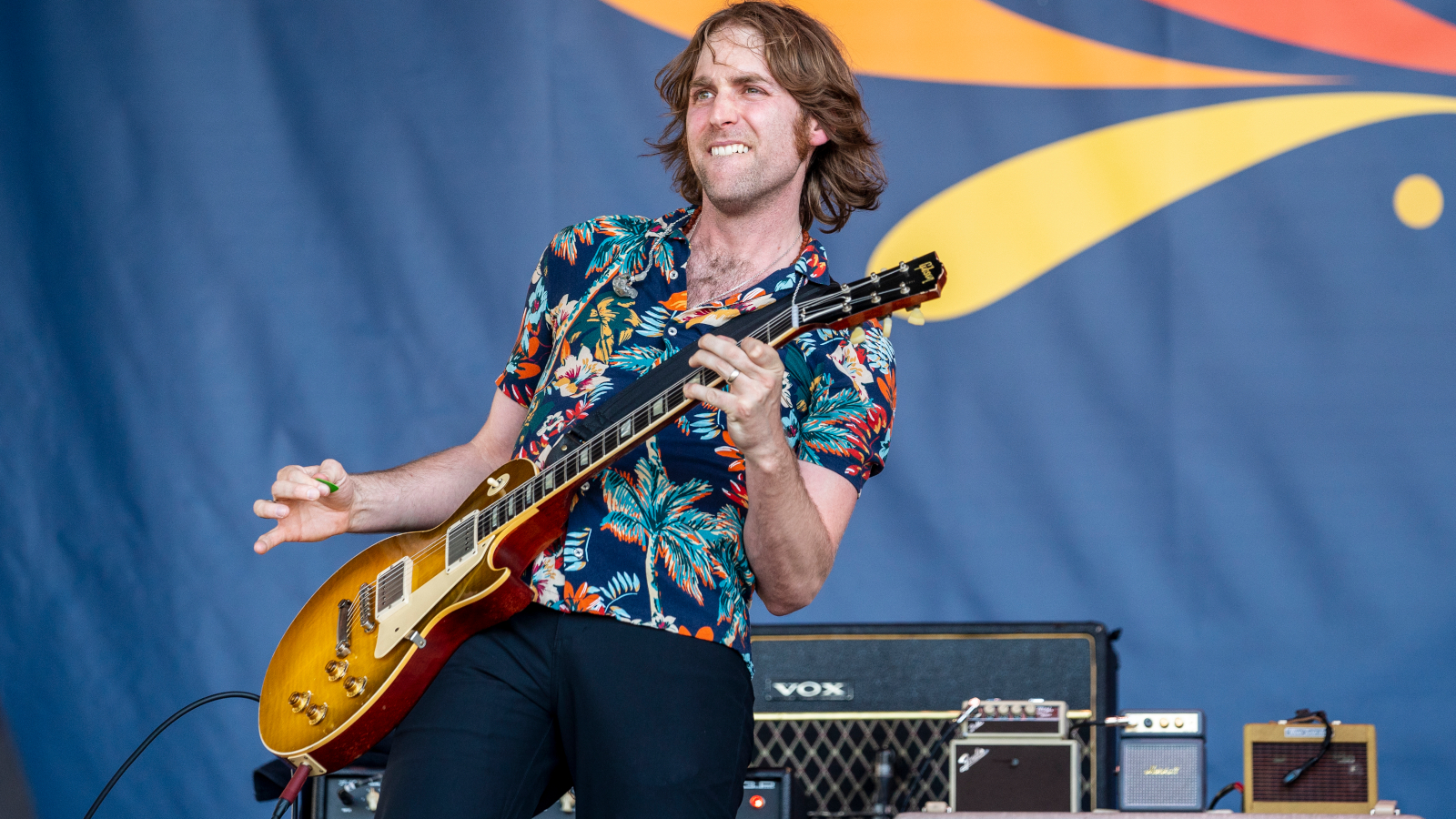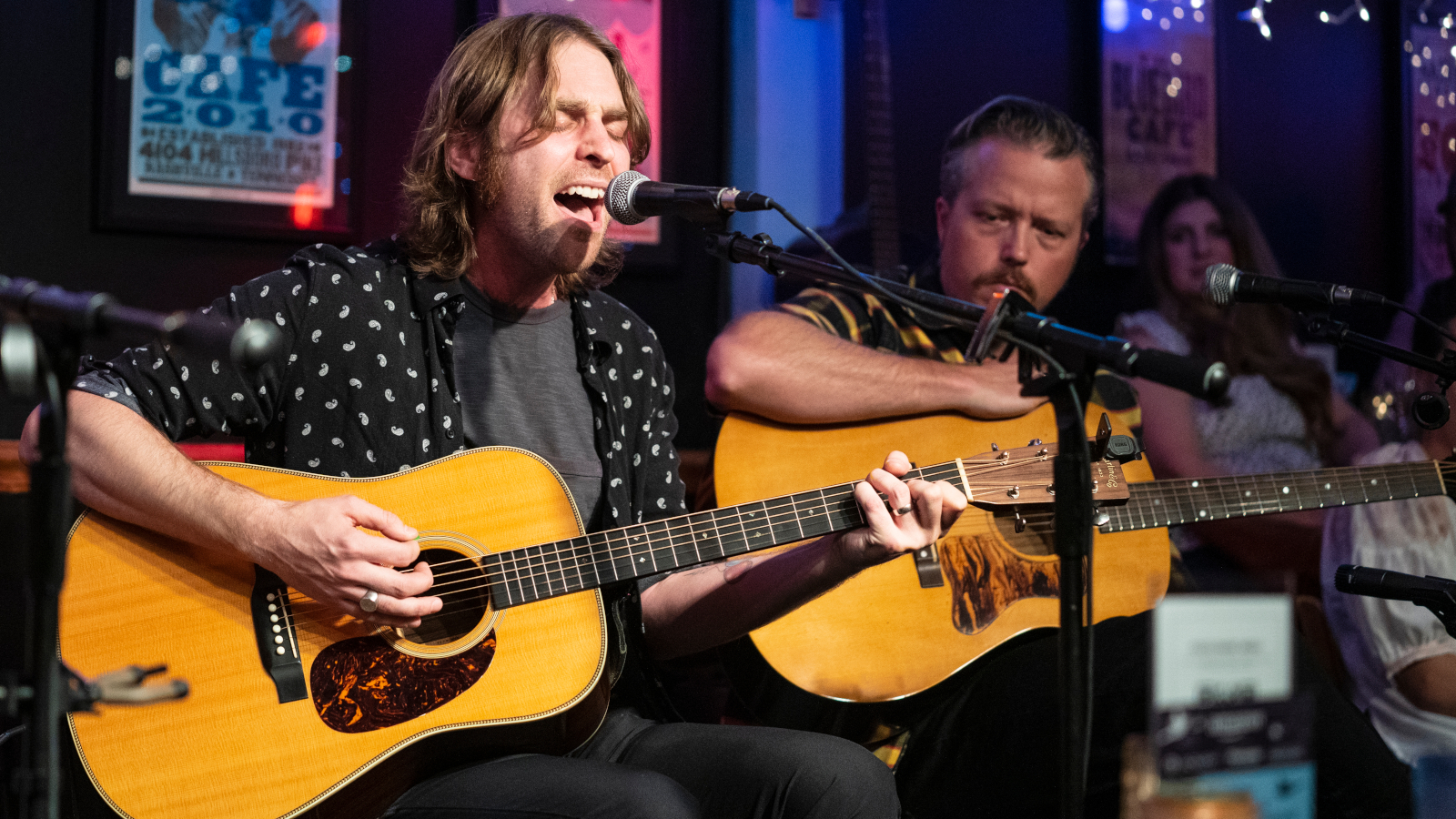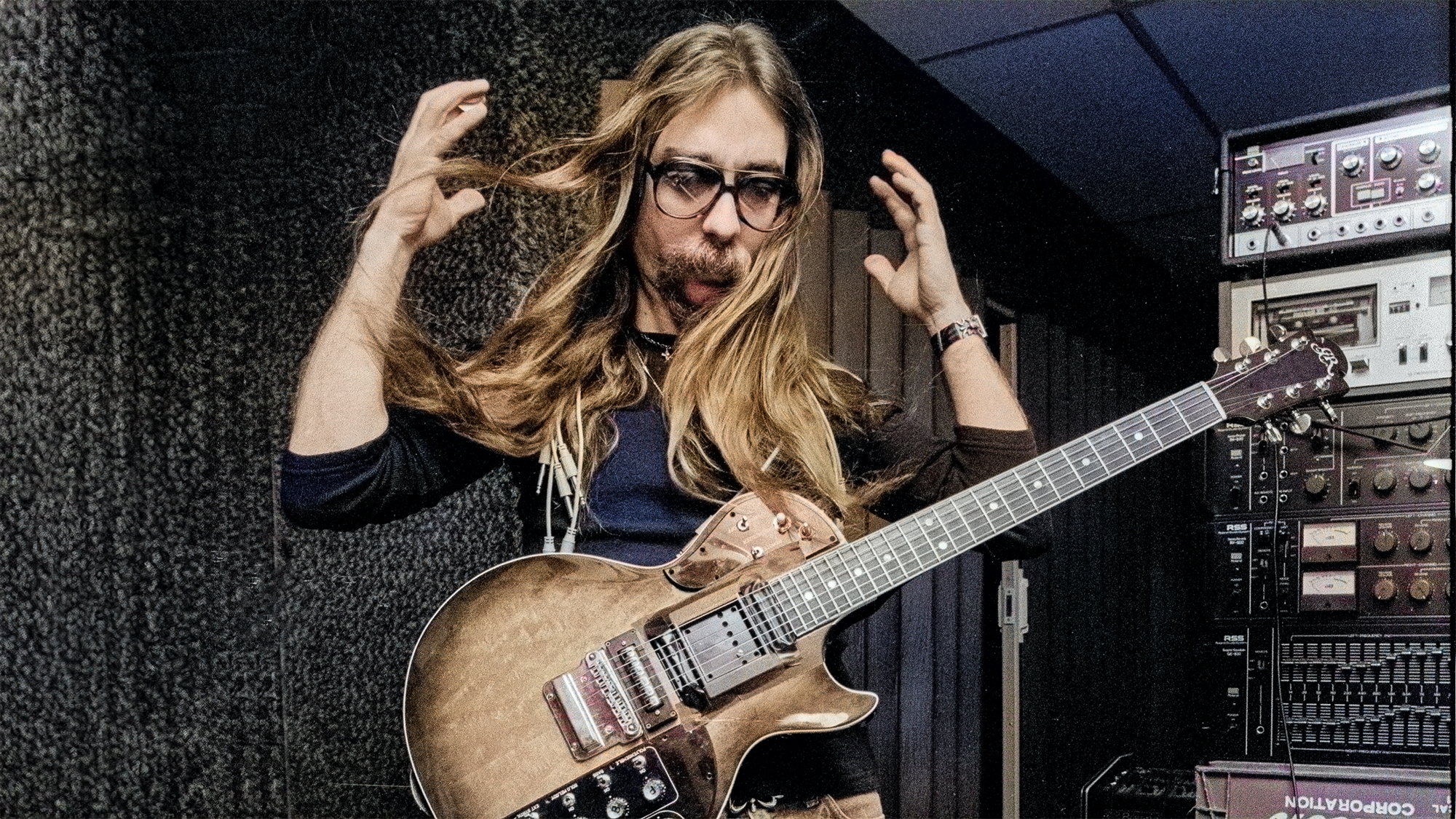
It doesn’t happen often, but every once in a while, Sadler Vaden feels like his guitar playing needs a bit of a recharge. Not that he’s ever at a loss for opportunities to play. Between his main gig as lead guitarist with Jason Isbell and the 400 Unit and a burgeoning solo career, the Grammy-winning musician happily notes that his dance card is usually full. Even so, he occasionally notices that some of his licks need a little sprucing up.
“It happens to everybody,” Vaden says. “I was talking to Butch Walker the other day, and he was like, ‘I feel like I’m playing the same licks for years.’”
One of Vaden’s tricks to shake off the cobwebs involves learning the solo of a song he loves but has never attempted to play before. “A couple of weeks ago, I started doing that with ‘Kid Charlemagne’ by Steely Dan,” he reveals. “I’ve been crazy about the song since forever, so I said, ‘It’s finally time I learned that solo.’ I haven’t gotten to the end yet, but I feel like it’s already opened my brain a bit. I had a gig the other night, and I was slipping little things from Larry Carlton’s soloing into what I was doing. Sometimes you have to force your mind into going new places – and your fingers will follow.”
He has other helpful suggestions as well, like knowing when to put the guitar down. “There are times when you come to a brick wall,” he says. “Your first instinct is to try to smash through it, but sometimes the best option is to look for a way around it, and the answer isn’t always obvious. Allow yourself a moment to assess and reflect.”
1. Play Things You Know on Acoustic Guitar
“This tip is for electric guitar players, of course. If you have things you know – solos, riffs, what have you – try playing them on an acoustic guitar. Right away, you’ll spot some weaknesses in your style and ability. It’ll improve your chops, as in your facility on the fretboard, as well as your timing.
“Playing the electric is fun, no doubt, but we tend to hide behind the power of the amp and our effects pedals. It’s like, ‘Okay, I can play this part a little sloppy. Nobody will notice.’ But guess what? When you get in a studio situation, a producer or engineer will notice. You might be asked to play a part clean, without a loud amp or distortion, and if you’re not articulating a passage precisely, you’ll get some comments you might not want to hear.”
2. Put the Guitar Down
“I’ve said this on some podcasts, and people were like, ‘What’s this guy talking about? That doesn’t make any sense!’ But I’ll say it again: Put the guitar down for a while. Stop playing, stop practicing. Whether it’s a few days, a week, two weeks even. Just give yourself a break already. It won’t be the end of the world, trust me.
All the latest guitar news, interviews, lessons, reviews, deals and more, direct to your inbox!
“I do it all the time. I’ll come off tour and the last thing I want to do is play the guitar. I need to let my brain take in other information. I want to take in some regular life again. Since I’ve played professionally, the longest I’ve gone without playing is probably two weeks, and at that point I feel like I really want to play again.
“Sometimes I have to get back into it and make my fingers do what I want them to – my muscle memory is gone a little bit. But I find that it helps me. I feel fresh and excited again, and I’m not playing those same patterns.”

3. Work on the Sound of Your Amp Before You Use Pedals
“I’ve seen guitarists get all their pedals going before they’ve even played a note through an amp. That strikes me as counterintuitive. Pedals should enhance a sound that’s already good; they shouldn’t have to mask a problem. It’s like southern barbecue: My favorite barbecue doesn’t need any sauce; if I put sauce on it, it’s because I want to make something good a little better.
“There are singular players like The Edge. The way he uses pedals is part of his art, and it’s a large part of U2’s sound. He’s a very special type of player, though, and I’ve heard him rock out without effects. He knows how to get it going just fine.
“For practically everybody else, though, I would say try to get a really good sound with just your guitar and amp. Pedals shouldn’t be your first go-to. If you’re looking for some power, get it out of your amp’s gain before you go stomping on distortion pedals. I used to be an offender. I thought my pedals were everything. Once I started working with people in studios, I found that pedals sometimes made my sound seem smaller.
“Dialing up a really nice full sound with just my amp gave me something good to work with. That’s the other thing: If you’re playing a part and it’s not happening, maybe you need to work on that part a little more – a pedal won’t improve it.”
4. Learn to Play Vocal Lines
“Let’s face it: Guitarists are enamored of solos and riffs. It’s all we play, and it becomes our vocabulary. But something I’ve found that really helps is when I learn how to play vocal lines of songs. There’s just certain things the human voice can do that an instrument can’t. It’s almost like another language.
“I stumbled onto this about five years ago and found it allowed me to get out of a rut. It opened me up melodically and sonically, but I think it helped my compositional abilities, too. If you can see where the vocal melody lives inside a scale, then you’re thinking differently. Maybe you can come up with different chord inversions to work under the vocal. It’s just a really good practice to get into.”
5. Learn Songs That Are Rhythmic
“Rhythm guitar is an often neglected and maligned aspect of playing. It’s a great idea to learn songs in which the lead lines are rhythmic riffs instead of lead lines. I’m talking ‘Substitute’ by the Who, ‘All Right Now’ by Free, ‘What I Like About You’ by the Romantics or Bachman-Turner Overdrive’s ‘Let it Ride.’ Rhythm guitar is the bedrock of everything. If you can play great rhythm guitar, you’re going to be a real asset in a band.
“I’m always working on my rhythm playing. Sometimes I’m like, ‘Man, I’m ahead of the beat!’ Other times, I feel like I’m dragging. I don’t know if you ever master it. To me, it’s a constant work in progress. Live, I take plenty of solos, but I also love to just hold down the rhythm. When you’re not playing solos, you should think of the guitar as part of the rhythm section with the bass and drums.
“In a studio, this is key. I’ve been in situations where someone didn’t nail the rhythm part, and it’s like, ‘We’re going to have to redo that.’ John Lennon knew how to play rhythm – talk about an underrated player. George Harrison, too. And Pete Townshend, obviously – one of the best. Keith Richards! He’s one of the most well-known and respected players of all time. He’s a legend, and he’s a rhythm player. He doesn’t even need all the strings. Take a cue from those guys and get your rhythm going.”

Joe is a freelance journalist who has, over the past few decades, interviewed hundreds of guitarists for Guitar World, Guitar Player, MusicRadar and Classic Rock. He is also a former editor of Guitar World, contributing writer for Guitar Aficionado and VP of A&R for Island Records. He’s an enthusiastic guitarist, but he’s nowhere near the likes of the people he interviews. Surprisingly, his skills are more suited to the drums. If you need a drummer for your Beatles tribute band, look him up.
